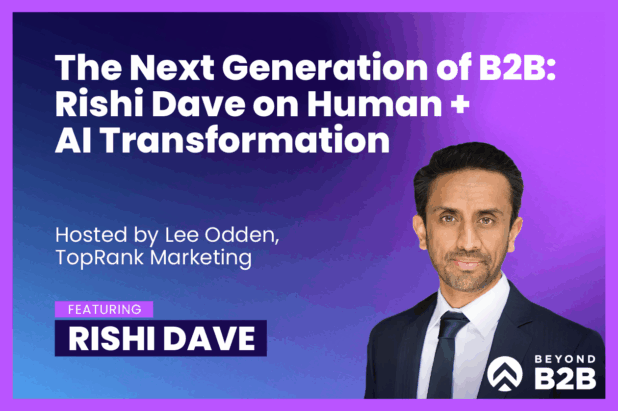When most marketers think about influencer marketing, they still picture big names, huge audiences, and a certain element of celebrity or notoriety. That kind of popularity works well in consumer marketing where a numbers game of reach the most eyeballs possible can translate to awareness and conversions. But in B2B marketing, where decisions are complex and buying committees are diverse, reach without relevance rarely delivers the kind of results brands expect.
That’s where micro-influencers come in.
Research shared by Emarketer says that B2B marketers see the most success with influencers or content creators that are micro-influencers vs. mega, macro or nano influencers.
Micro-influencers, often defined as individuals with between 1,000 and 50,000 followers, bring a level of focus and credibility that larger personalities sometimes lack. That is not to say there is not a place for macro or celebrity level business influencers in B2B marketing, especially when goals are primarily awareness focused. But when it comes to engagement and connecting with specific audiences, tapping the long tail of influence through micro-influencers can be highly effective.
When it comes to engagement and conversion, micro-influencers can play a very special role for B2B marketing efforts. Micro-influencers are subject matter experts, niche community leaders, trusted voices inside technical disciplines, and respected practitioners. For B2B marketers that are looking to build trust, and influence purchase decisions, micro-influencers can provide an opportunity to engage in more meaningful ways.
What makes micro-influencers valuable for B2B marketing?
The value of a micro-influencer isn’t the size of their audience, but in the quality of relationship they have with that audience. These are individuals who have earned their following through creating value from first-hand experience, deep expertise, and active participation in their communities.
In B2B categories like cybersecurity, supply chain tech, HR software, and cloud infrastructure, buyers are often skeptical of generic messaging, formal brand marketing content and increasingly, any content that appears AI-generated. They look for voices they trust.
Because their audiences are smaller and more targeted, micro-influencers tend to engage more deeply with followers. They answer questions. They participate in comment threads. They show up at events and contribute to discussions. That kind of interaction is difficult to scale, and that is exactly why it matters.
At TopRank Marketing, we have seen firsthand how partnering with micro-influencers helps B2B brands reach the right people in the right context. Whether that’s a niche LinkedIn group, an industry-specific newsletter, a podcast, or a Slack channel rich with practitioners, micro-influencers can often unlock access that broader campaigns cannot.
When reach isn’t enough for your influencer marketing
Most B2B buying decisions involve multiple stakeholders. Research from Gartner shows the average buying group includes six to ten people, each bringing their own priorities and questions to the process. These buyers are not looking to be sold to. They are looking for useful insights, credible perspectives, and answers to specific problems.
Macro-influencers might generate impressions, but micro-influencers can drive consideration and trust. What makes them influential is that they speak the language of the buyer. They understand the technical and operational nuances. They don’t need to be briefed on the issues because they live them.
Our approach to working with B2B influencers is like a recipe with ingredients. Different types of influencers are matched with content types and intent. Macro-influencers are great for generating awareness and micro-influencers and creators are effective for engagement and conversions. Most of our work with influencers and creators for B2B marketing campaigns includes a mix of influencer types because campaign objectives and audience interests call for more than a “one size fits all” approach to influencer content. You can see examples of these B2B influencer programs featuring brands including Adobe, LinkedIn, Dell, SAP, Mitel, Demandbase and last year’s Best Use of Influencer Marketing Award Winner, Sprinklr.
How to identify the right B2B micro-influencers
Finding the right micro-influencers starts with clarity about the audience you are trying to reach. What roles are involved in the buying process? What communities do they participate in? What questions are they asking? What are their content format preferences? Once you have that understanding, look for individuals who:
- Are active in relevant industry conversations
- Create or curate high-quality content
- Have authentic engagement
- Demonstrate professional credibility
- Share values or perspectives that align with your brand
There are a number of tools that can help surface potential influencers based on topical relevance, audience resonance, audience reach and engagement. But manual review is still essential. In B2B there are a growing number of creators that produce videos as their content focus which is an especially effective format for today’s buyer preferences. LinkedIn in particular appears to be encouraging if not favoring B2B creators that publish video which can open doors for your brand to engage with audiences that you might not otherwise be reaching.
Influence doesn’t only reside outside your organization. In fact, one of the most important micro-influencer categories are your internal experts. In our experience, it can be highly effective to activate employees, customers, and partners with authentic insight and an engaged audience as part of your overall influencer program.
Some of these internal, partner or customer micro-influencers will not see themselves as “influencers”. That’s OK. We’ve dealt with coaching and encouraging such subject matter experts in creative ways to produce content and activate them. Dark influence is a powerful force and can only be unlocked with the most empathetic, credible and relevant engagement efforts. You really need to understand what motivates the SME that has the trust and attention of the audience you’re after, but isn’t as skilled as a content creator.
What makes a great B2B micro-influencer collaboration
Once you’ve identified the right micro-influencers for your B2B marketing campaign, the next step is collaboration. When working with niche, but established creators, B2B brands need to expect payment for the micro-influencer content. That means activation specifications, offers, negotiations, agreements and oversight to ensure specifications and deliverable shave been met. Of course we take care of all of that at TopRank Marketing.
Depending on the goals of the B2B brand and marketing program, micro-influencer content collaborations can take several forms including micro-influencer content created from a brand brief that is published on the creators’ social channels, content is made by the micro-influencer and those contributions are incorporated into brand content, or a mix of both. A few examples include
- Contributor quotes in long-form content
- Influencer-hosted webinars or panels
- Podcast guest features
- Social media collaborations
- Influencer-authored blog posts or newsletters
Micro-influencers that are rising in their careers value being seen as contributors, not just distribution channels. When done well, content collaborations and co-creation benefits all: the influencer, the brand and especially the shared community. The brand gets trusted content that resonates with a specific audience. The influencer gets exposure and alignment with a reputable company.
Based on our research in the 2025 B2B Influencer Marketing Report, the top content formats B2B marketers are using with influencers are:
- Social Media Content (93%)
Influencers sharing insights, tips, or brand mentions on platforms like LinkedIn, Twitter, and YouTube. - Blog Posts (74%)
Co-created or guest-authored posts that feature influencer insights, quotes, or expertise. - Recorded Video (72%)
Pre-produced video content, such as interviews, product demos, or expert commentary featuring influencers. - Webinars (67%)
Live or on-demand sessions where influencers participate as speakers, panelists, or hosts. - Podcasts (61%)
Audio or video podcast episodes featuring influencers as guests or co-hosts. - Case Studies / Customer Stories (55%)
Content where influencers contribute to or contextualize real-world results and lessons. - Reports / eBooks / Guides (53%)
Longer-form content co-created with influencers to build authority and trust. - Live Video (51%)
Real-time content on platforms like LinkedIn Live, often more conversational and less produced than recorded video. - Expert roundups and Q&As
Measuring B2B micro-influencer marketing success
In B2B marketing, the true value of micro-influencer programs isn’t about volume unless of course you’re engaging a large number of micro-influencers. While KPIs like likes, impressions, or shares are of interest in evaluating individual influencer actions, the real impact shows up in deeper engagement metrics and longer-term business outcomes. Look for more qualitative metrics such as:
- Content engagement rates
- Influence on time-on-page and scroll depth
- Impact on lead quality or MQL volume
- Feedback from sales teams on content usefulness
- Inclusion in third-party conversations or earned media
- Micro-influencer programs are not quick-win campaigns. They are relationship-based efforts that build trust over time. The value compounds with each collaboration and each touchpoint.
Why working with micro-influencers matters now
The state of B2B marketing is changing for many reasons from the impact of AI to social, political and economic uncertainty. In such environments, buyers are more cautious and trust is harder to earn and easier to lose. At the same time, the pressure to create content, drive engagement, and support pipeline is higher than ever.
Engaging and developing relationships with micro-influencers provides a path towards relevance with discerning B2B audiences. They can bring relevance, trust and even humanity to B2B marketing efforts. They help brands connect with audiences in a way that feels personal, credible, and timely. And they often do so at a lower cost and higher ROI than large-scale influencer programs.
As generative AI continues to flood the internet with low-value content, human voices that carry real trust will become more valuable-not less. That is why now is the time for B2B marketers to consider where micro-influencers fit in your B2B marketing mix.
What to do next?
If you’re looking to build or evolve your B2B influencer program, especially in a way that incorporates the credibility of micro-influencers, we can help. Visit our Influencer Marketing Services page to learn how TopRank partners with brands to build influence that drives measurable results.



